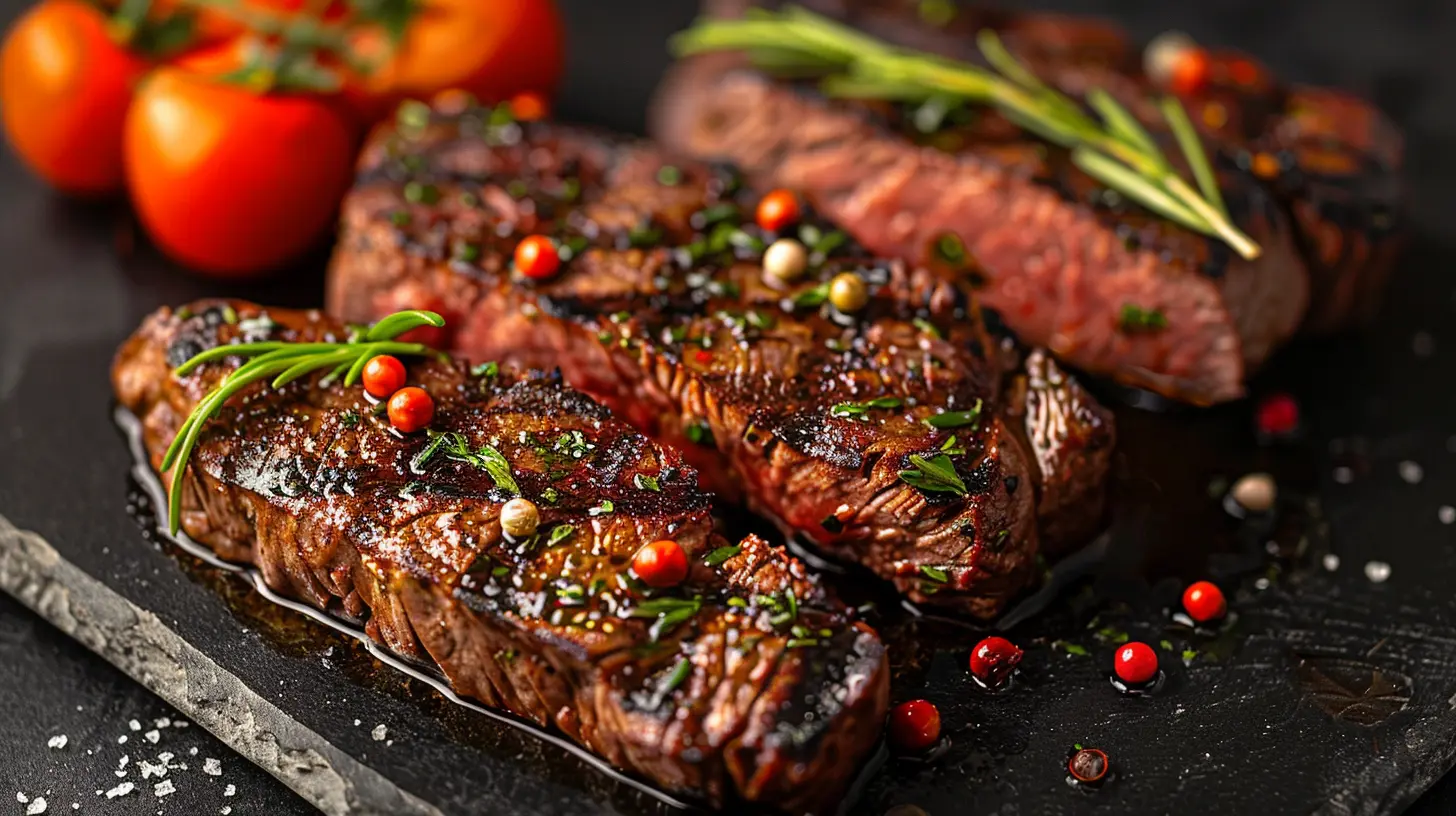Understanding Keto Macros: The Key to Success
11 October 2025
If you’ve ever dipped your toes into the world of the ketogenic diet (or keto, for short), you’ve probably heard the term “macros” tossed around like confetti at a wedding. People say things like, “Count your macros!” or “You’re not hitting your macros, that’s why you're not in ketosis!” But what the heck are keto macros, really? And why are they such a big deal?
Well, pull up a chair and grab a cup of bone broth, because we’re diving headfirst into the wonderful, sometimes-wonky world of keto macros. By the time we’re done here, you’ll not only understand what they are but also how to master them for keto success.
What Are Macros, Anyway?
Let’s start with the basics. “Macros” is short for macronutrients—the big three nutrients your body needs in large amounts: fats, proteins, and carbohydrates. Unlike vitamins and minerals (which are micronutrients), macros are the stuff that gives you energy in the form of calories.Each macronutrient brings something different to the table:
- Fats = 9 calories per gram
- Proteins = 4 calories per gram
- Carbohydrates = 4 calories per gram
Okay, so why does this matter on a ketogenic diet? Because keto isn’t just any diet—it’s a fat-burning, carb-ditching, metabolic switch-flipping lifestyle. And to make it work, you’ve got to get those macros right.
Why Getting Your Keto Macros Right Is Non-Negotiable
Think of your keto macros as the GPS system guiding your body into ketosis—that magical metabolic state where your body burns fat for fuel instead of carbs.If your macro ratios are off, your body might just keep cruising on carbs and never flip the switch to fat burning. Or worse, you could end up eating too much protein (yes, that’s a thing), which can also kick you out of ketosis.
So yes, tracking your macros is a little extra work, but once you understand the “why,” it all starts to click.
The Typical Keto Macro Breakdown
Here’s the standard macronutrient ratio for a ketogenic diet:- Fat: 70-75% of daily calories
- Protein: 20-25%
- Carbohydrates: 5-10%
Let’s break that down in plain English.
Fat Is Your Best Friend
If the keto diet had a mascot, it would be a stick of butter in a superhero cape. Fat is the superstar here. It fuels your body, keeps you satiated, and helps you absorb fat-soluble vitamins like A, D, E, and K.But don’t think of fat as just bacon and cheese (though those are fun). Healthy fats like avocado, olive oil, nuts, seeds, and fatty fish should make up the bulk of your intake.
Protein: The Balancing Act
Protein is super important, but on keto, more is not always better. That’s because excess protein can be converted into glucose through a process called gluconeogenesis (we know—it sounds like a spell from Harry Potter).Stick to moderate amounts: enough to maintain and repair muscle, but not so much that your body thinks, “Ah, carbs in disguise!”
Carbs: The Tiny but Tricky Part
Carbs take a backseat on the keto train—and we mean way back. At just 5-10% of your daily intake, carbs are more of a side note than a main character.But they still matter. Most keto folks aim for 20-50 grams of net carbs per day. What are net carbs? That’s total carbs minus fiber (and sometimes sugar alcohols), since fiber doesn’t spike your blood sugar.
How to Calculate Your Keto Macros
So how do you figure out your personal macro goals?You could grab a calculator, scribble a few equations, and hope for the best. Or you could use an online keto macro calculator (trust us, your sanity will thank you).
But here’s a basic idea of how it works:
1. Find your daily calorie needs – Based on your activity level, age, gender, and weight loss or maintenance goals.
2. Apply the keto percentages – Use the 70/25/5 rule (fat/protein/carbs).
3. Convert percentages to grams – Divide your fat calories by 9, and your protein and carb calories by 4.
Let’s say your daily calorie goal is 2,000 calories. Your macros might look like this:
- Fat: 70% of 2,000 = 1,400 calories ÷ 9 = ~155g
- Protein: 25% of 2,000 = 500 calories ÷ 4 = ~125g
- Carbs: 5% of 2,000 = 100 calories ÷ 4 = ~25g
Boom! Now you’ve got actual numbers to aim for each day.
Tools That Make Tracking Easier
Honestly, trying to track macros in your head is like trying to juggle flaming torches blindfolded—not impossible, but definitely messy.That’s where tracking apps shine. Here are a few to consider:
- MyFitnessPal – Big database, customizable goals
- Carb Manager – Specifically for keto and low-carb
- Cronometer – Super detailed, great for micronutrient tracking too
Plug in your daily food, and these apps will do the math for you. Just don’t forget to weigh and measure your portions—it’s easy to underestimate that tablespoon of peanut butter (we’ve all been there).
Adjusting Your Macros to Match Your Goals
Not everyone on keto is doing it for the same reason. Some want to lose weight. Others want better brain function, more energy, or improved blood sugar control.So your macro goals might shift based on your personal objectives.
For Weight Loss
If you’re trying to shed pounds, you’ll want a calorie deficit—meaning you eat fewer calories than you burn. You can keep the same macro ratios, just reduce your overall intake.For Muscle Gain
You might increase protein a bit and aim for a slight calorie surplus. This helps build muscle but still keeps carbs ultra-low so you stay in ketosis.For Maintenance
Here, you’re eating roughly the same amount of calories you burn. Stick to the standard keto macros and just maintain that balance.Common Keto Macro Mistakes (And How to Avoid Them)
Let’s face it: starting keto can be confusing. Here are a few common mistakes people make when it comes to macros—and how to steer clear.Mistake #1: Not Eating Enough Fat
We’ve been taught to fear fat for decades. So it’s natural to feel hesitant about drizzling oil on your veggies or snacking on macadamia nuts. But if you skimp on fat, you’ll feel tired, hungry, and ready to quit.Fix it: Embrace healthy fats! Add olives, avocado, coconut oil, and grass-fed butter to your meals.
Mistake #2: Overeating Protein
We get it—you want to stay full and build muscle. But remember, too much protein can backfire on keto.Fix it: Calculate your protein needs based on lean body mass. Most people do well with 0.6-1.0 grams of protein per pound of lean body mass.
Mistake #3: Ignoring Hidden Carbs
You’d be surprised how many “keto-friendly” products sneak in sugar or starches that can sabotage your progress.Fix it: Read food labels like a detective. Watch out for sneaky ingredients like maltodextrin, dextrose, and modified food starch.
Do You Have to Track Macros Forever?
Honestly? No.When you’re just starting out, tracking is incredibly helpful. It teaches you what foods work for your body, how many carbs are hiding in your salad dressing, and how to hit your fat goals without overdoing it.
But once you get the hang of keto, your eyes and your hunger cues get smarter. You might naturally start hitting your macros without even opening your app. It becomes second nature.
Final Thoughts: Your Keto Journey, Your Rules
Look, keto isn’t just a diet—it’s a lifestyle shift. And like with anything worthwhile, the learning curve is real. But mastering your keto macros? That’s the secret sauce for long-term success.Think of your macros as your keto compass. They guide you through decisions, help you course-correct when needed, and ultimately lead you to your health goals—whether that’s losing weight, clearing brain fog, or just feeling better in your own skin.
So don’t stress if it feels overwhelming at first. Take it one step at a time, stay curious, and give yourself grace. You’ve got this.
Here’s to thriving on keto—macros and all.
all images in this post were generated using AI tools
Category:
Keto DietAuthor:

Arthur McKeever
Discussion
rate this article
1 comments
Delia Pope
Great article! Understanding keto macros is essential for anyone looking to thrive on a ketogenic diet. Your tips are clear and practical, making it easy for both beginners and seasoned followers to navigate their journey. Can't wait to implement these insights into my meal planning! Keep up the fantastic work!
October 11, 2025 at 4:08 AM

Arthur McKeever
Thank you so much for your kind words! I'm glad you found the tips helpful and wish you the best on your keto journey!


